China Ecommerce 2022
1 Apr , 2022
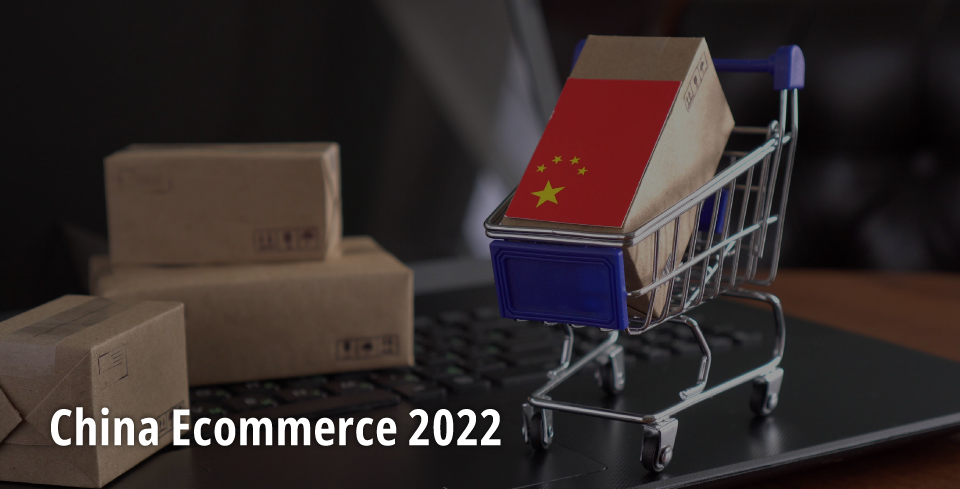
Propelled by a rapidly expanding consumer market and the development of digital technologies, China’s ecommerce continues to grow all the rage across the country. Being ranked 1st worldwide by its online retail sales, with its ecommerce market contributing more than half of the country’s retail sales in 2021, China ecommerce appears to be a zesty delicacy for brands to taste a tip. Coupled with the accelerating consumers’ online migration in the COVID-19 pandemic, businesses could reach Chinese consumers by selling online.
The China ecommerce market is brimming with endless opportunities. Whether you’re looking to expand your present business or start a new one from the ground up, read on for tips that will make your launch successful in the China ecommerce market!
China Ecommerce Landscape in 2022
Top China Ecommerce Platforms in 2022
China Ecommerce Trends in 2022
China Ecommerce Challenges
1. China Ecommerce Landscape in 2022
Currently, China’s internet penetration rate stands at 65.2%, reviewing that plenty of as-yet-untapped potential customers is more than ready for the ecommerce industry to court. The China ecommerce market is constantly booming. In 2022, China ecommerce sales have reached 15.5 CNY trillion, with an expected annual growth rate of 12.4% between 2021 and 2025. By 2025, the China ecommerce market is prospected to amount to 1,230.4 million users, depicting the immense potential for China ecommerce given the massive consumer market.
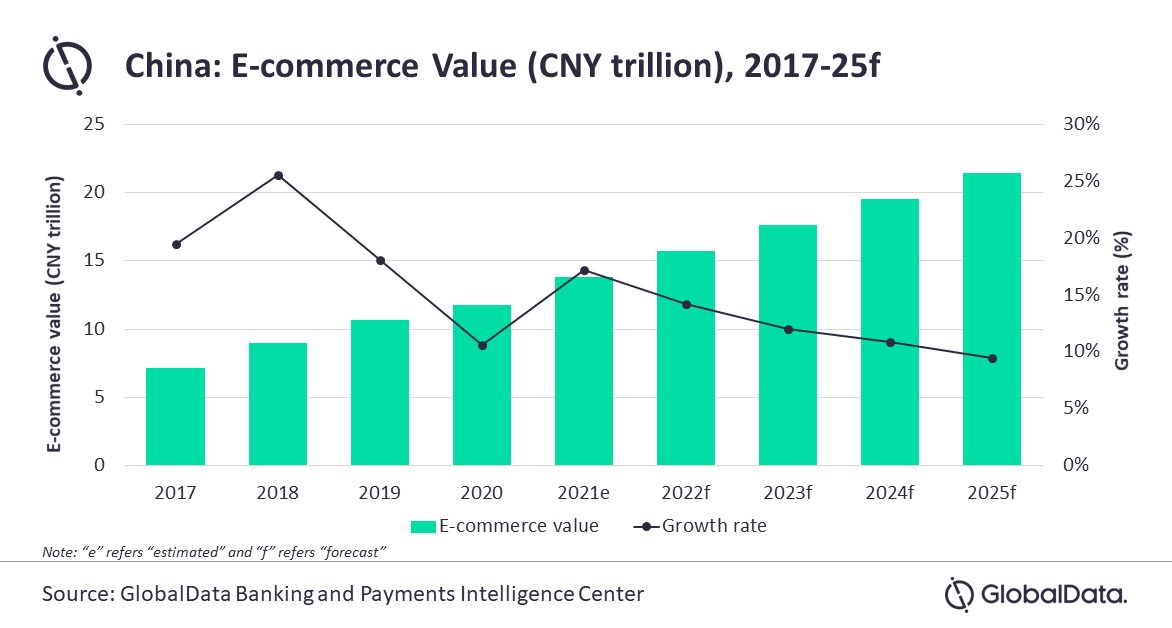
China ecommerce value (CNY trillion) from 2017 to 2025
Thanks to the technological advancement in payment systems, including Alipay and WeChat Pay, which collectively account for 57.6% of total ecommerce value, Chinese consumers have increased their confidence in online transactions. This had led to an increase in ecommerce purchases. Last year, nearly half of Chinese consumers made online purchases or pay bills online.

China consumers’ financial inclusion factors
Delving deep into Chinese consumers’ ecommerce activity, approximately two-thirds of them have searched for products or services to buy online, and 91.5% of Chinese consumers have visited an online shopping website, indicating that the vast majority of Chinese consumers are familiar with online shopping platforms and the products they offer. As of 2020, the number of online shoppers in China was estimated at 782.41 million and is expected to skyrocket in 2022, following the Covid-19 pandemic. This cements China’s standing as a shopping behemoth and ensures its full capacity.
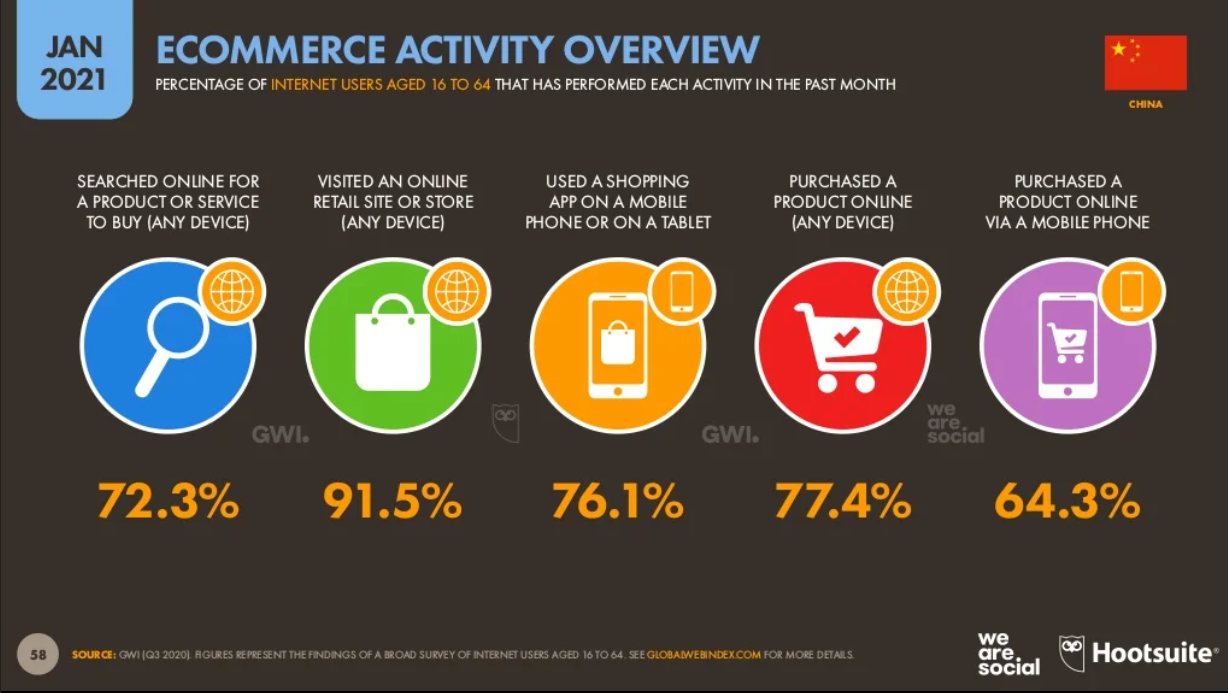
China’s ecommerce activity overview
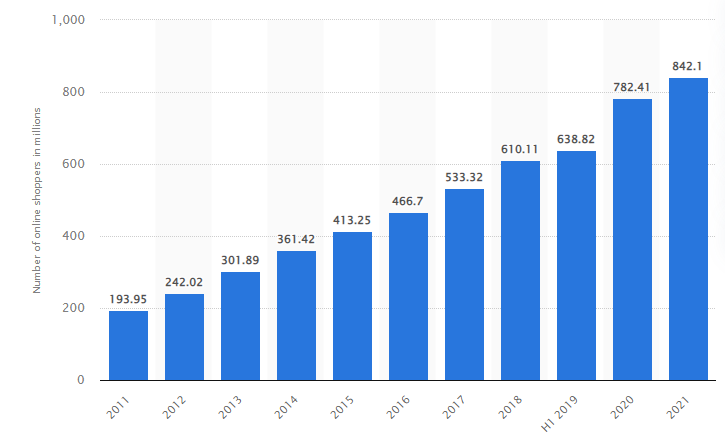
Number of online shoppers in China (2011-2021)
Fashion and beauty are the most frequently shopped product categories among Chinese online buyers, followed by toys & DIY sector, and food & personal care sector. Altogether, the three categories aggregated for a total of $778.5 billion in ecommerce spending. Yet, when it comes to ecommerce growth, the food & personal care category had a 46.8% increase, while digital music saw a 30.9% increase. Brands wanting to grow their ecommerce business should keep an eye on a popular product category with fast-growing potential, guaranteeing your products or services’ lucrativeness and demand among Chinese consumers.
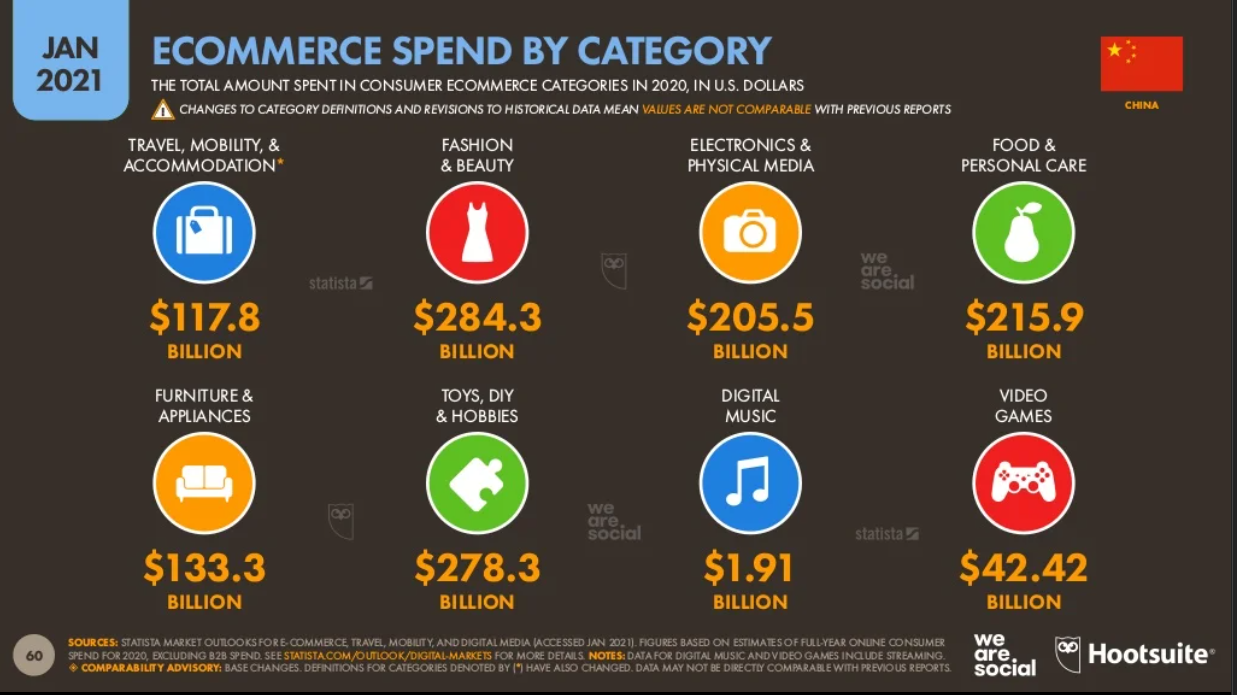
China’s ecommerce spend by category
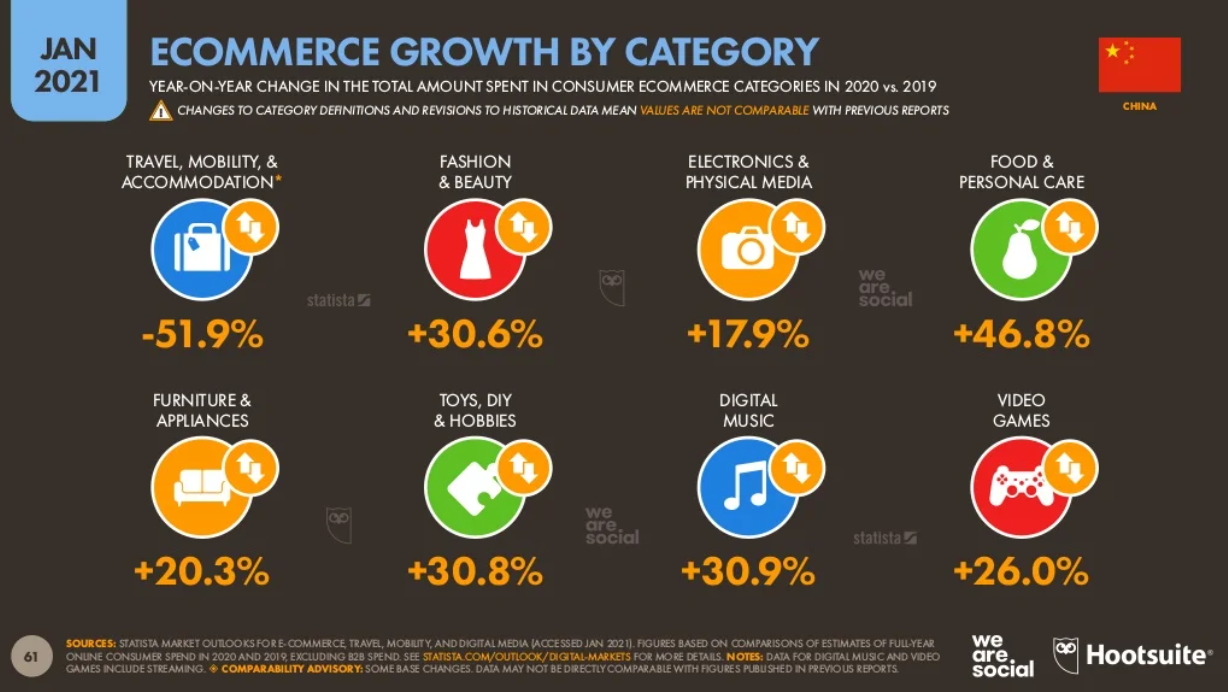
China’s ecommerce growth by category
2. Top China Ecommerce Platforms in 2022
China’s ecommerce market is a complex web of partners and competitors. Research shows that the share of independent stores, including ecommerce websites and brand-own websites, doubled last year. Even though rivalry displays intensity, 5 ecommerce platforms still run an edge in the China ecommerce marketplace, dominating 80% of the market: Alibaba Group (Taobao & Tmall), PinDuoDuo, Xiaohongshu, and JD.com.
Alibaba Group (Taobao & Tmall)
Owned by the China ecommerce giant Alibaba Group, Taobao is China’s most popular online shopping platform, upholding gross merchandise value (GMV) of $1 trillion GMV. Taobao supports both B2C and C2C transactions, serving millions of product listings to China’s vast audience base. As of 2021, it boasts 792 million+ monthly active users and sells 40K+ products per minute. Millennials to their 30s make up 70% of active users.
Setting up on Taobao is worthwhile. Taobao has incorporated Guang Guang to help marketers reach more consumers as part of their marketing efforts. All content curated by brands or KOLs about the product is linked directly to the product. Taobao users may seamlessly go from seeing on Guang Guang to purchasing. By integrating social ecommerce functionality on Taobao, brands could leverage KOLs and content marketing to increase customer engagement and brand discovery. In addition, the platform launched out Taobao Live, which allows retailers to livestream product showcases. Taobao Live sales surpassed $280 million in just 90 minutes in 2020.
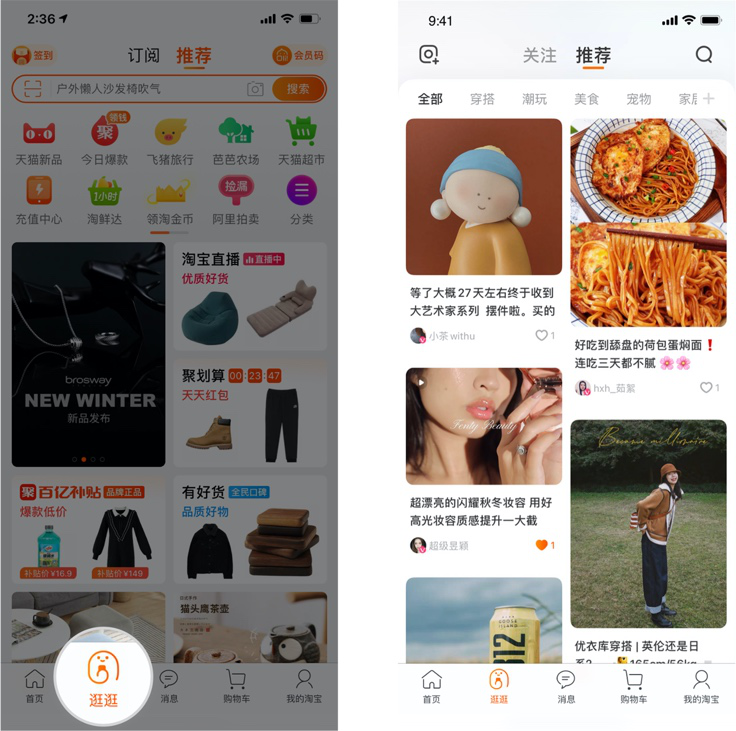
Taobao’s Guang Guang
Tmall, the other Alibaba business, is China’s largest B2C ecommerce platform, accounting for 51% of all B2C transactions. It’s a virtual shopping hub that hosts over 180,000 international brands, such as Dyson, Chanel, Dior, and many more. It has over 780 million monthly active users. Tmall's GMV has tripled over the years, reaching 3.2 trillion yuan in 2020. At its peak, such as during Double 11 big sales events, Tmall can generate 74.1 billion in a day.
To help marketers engage with Chinese consumers, Tmall launched Flagship Store 2.0, featuring Tmall "mini-stores," store lofts, fan club, and 3D shopping. Based on users’ preferences, products are personalized and brought to users’ attention. The 3D shopping function delivers an immersive and interactive ecommerce experience that mimics in-store purchasing, strengthening brand loyalty and creating added value.

Tmall Flagship Store 2.0
PinDuoDuo
Dubbed “Dark Horse”, PinDuoDuo is China’s fastest-growing B2C ecommerce platform, with an 807% increase in the past three years. In 2020, the platform had over 643 million monthly active users and received up to 100 million orders every day. Compared to other ecommerce platforms, females aged 30 to 49 in 3rd tier cities or beyond make up roughly 60% of PinDuoDuo demographics. Also, the average order value is only USD 6, far below other ecommerce platforms. For brands targeting price-sensitive middle-aged groups, PinDuoDuo would be your ideal platform to engage in.

PinDuoDuo demographics and average order value
To stand out from the throng, PinDuoDuo integrates social networks into its online shopping process. It’s intended to incentivize users to share products on social media like WeChat and QQ, to form a “shopping team” to unlock a price chop for their purchases. The bigger the team, the bigger the discount. This keeps the users better hooked for a more interactive and dynamic shopping experience. Coupled with various incentives such as daily check-ins, card programs, mini-games, cash coupons, and free products, Pinduoduo manages to keep users engaged. Pinduoduo soon became a viral success in China.

Pinduoduo: Creating Community via Team Purchase
Xiaohongshu
Evolving as China’s greatest content hub, Xiaohongshu is a social media platform that demonstrates a blend of user-generated content (UGC) and ecommerce, having over 100 million monthly active users. Millennials and Gen Z account for nearly four-fifths of users, with the upper-middle and middle classes accounting for two-thirds. Xiaohongshu has a female user base of 88%, indicating its capacity to reach Chinese female consumers. Every day, the platform aggregated over 8 billion content views, transforming into a savvy ecommerce channel to target trend-conscious and affluent consumers.
On Xiaohongshu, brands can create their RED store and link it to their brand account to sell their offerings. Simply clicking on their interested products will direct them to a page where they may buy right away, increasing the brand’s conversion rate. Authenticity is core to Xiaohongshu. Together with the “shopping notes” that generate favorable word-of-mouth marketing on the platform, users have access to a strong community of UGCs, which serves as a reliable source for product or brand information. Brands can raise brand awareness and build a tighter, deeper association with current and potential Chinese consumers.
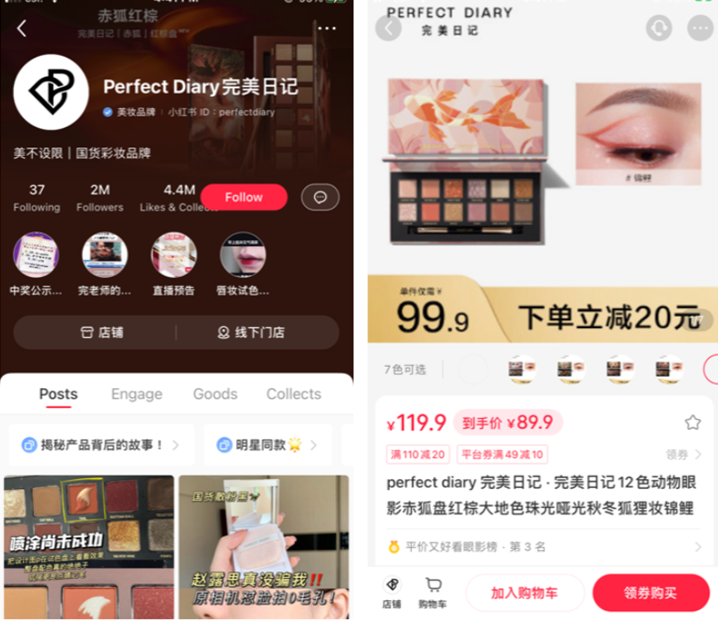
Xiaohongshu RED store
JD.com
JD.com is China’s leading one-stop ecommerce platform, holding a commanding 16.7% of all Chinese ecommerce sales. Partnering with Google, Tencent, and Walmart, JD.com’s expansive reach caters to over 550 million Chinese consumers, offering direct access to a wide range of authentic and premium products. Over 20,000 brands are listed on JD.com. Each day, the ecommerce site produces $48.7 billion in revenue, not to mention the 900 warehouses across China, supported by a comprehensive delivery and supply chain infrastructure.
Before diving straight into JD.com, it’s worth noting that JD.com offers three types of stores: Direct Sales for B2B & B2C transactions, JD Marketplace for third-party sellers, and JD Worldwide for cross-border prime goods. Similar to other China ecommerce platforms, JD Worldwide allows international brands or retailers who are legally registered outside China to build JD stores and sell directly to Chinese online shoppers. Trendy and recommended products are displayed on the search result pages. To ensure your JD store gains considerable traffic, brands should make their JD storefront appealing and presentable. It’s also a good idea to use eye-catchy banner ads and offer discounts to draw attention to your product’s features and functionalities, accordingly, boosting sales.

JD.com store
3. China Ecommerce Trends in 2022
3.1 China Social Commerce is the Next Frontier
See it, click it, and buy it. Isn’t that convenient? Initially created as venues for interpersonal connections, social media has since expanded to the ecommerce space. And, while it’s part of the ecommerce umbrella, social commerce is all about online selling that takes place on social media platforms. The entire shopping experience — from product discovery and research to the checkout process — takes place right on a social media platform.
Some may wonder what makes social commerce so unique, given that it functions similarly to ecommerce. The answer is obvious. Chinese people are social media addicts. China, with almost 927 million social media users, provides an enormous audience base for brands to reach and target. In addition to the seamless customer journey and content sharing ability that social commerce delivers, brands can grow their audience, improve traffic, increase engagement and retention. The number of China social commerce users has reached 780 million by 2020, with a market size of 2.3 trillion yuan.
Recognizing the power of social commerce, many Chinese social networks have integrated ecommerce functionality into their platforms, including Taobao and Tmall’s Weitao, Douyin store, and WeChat Mini Shop. Not to mention Xiaohongshu and PinDuoDuo, two well-known China social commerce platforms. Reaping off fully the benefits of social commerce, brands see significant revenue growth.
Lancôme, for example, has set up a WeChat Mini Program Mall. Apart from launching mini-program exclusive products and sending out samples, Lancôme also built a WeChat community where it provides beauty advice, skincare science, point-burning privileges, etc. In 2020, Lancôme sent out 400,000 samples, with a repurchase income of more than 10 million yuan. Through a constant social presence on WeChat, Lancôme managed to retain customers’ loyalty and reinforce their sense of belonging and recognition. As a result, the GMV of Lancôme's mini-program official store climbed by 97% year over year.
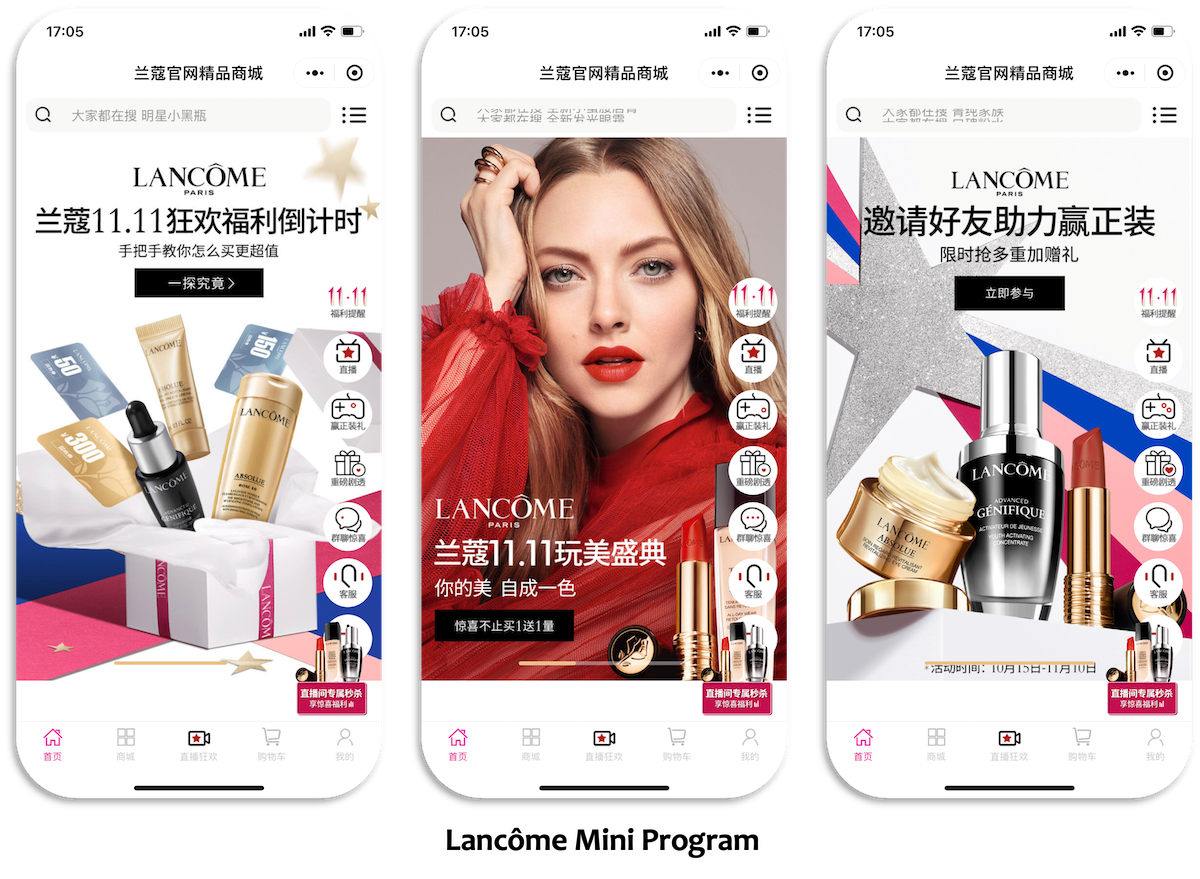

Lancome WeChat community
Without a doubt, social commerce is seen to be an effective means for broadening brand reach, connecting brands with consumers, piquing their interests, and enhancing engagement. Together with the conversational augmented reality (AR), and voice technology emerging into social commerce platforms, social commerce is well placed to be an essential element of China ecommerce.
3.2. China KOL Livestreaming Ecommerce Poised to Grow Further
As viewers tune in, comments flash across the screen. In a matter of seconds, items left sold out. That’s the power of livestreaming ecommerce. Chinese people usually watch livestreaming ecommerce three to five times a week. Inherited with the high level of interactivity and ability to alleviate FOMO (Fear of Missing Out), livestreaming ecommerce continues to win in connecting markers and Chinese audiences. The livestreaming ecommerce sales in China are even expected to skyrocket to 624 billion yuan by 2023!
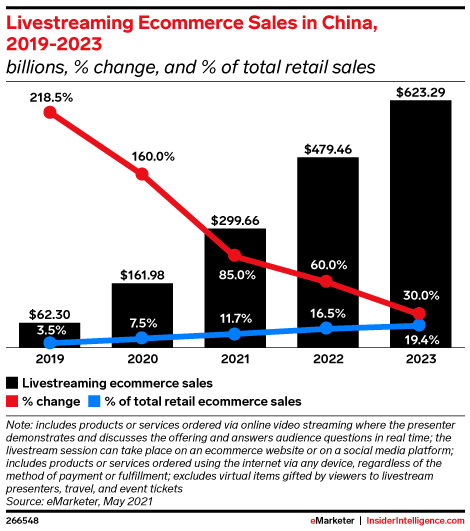
China livestreaming ecommerce sales trend
Similar to in-person shopping, Chinese consumers can comment on livestreams to make virtual contact with the host. They can ask real-time questions about the products showcased, request close-ups or different angles of certain items, watch product demos, or receive promo codes at random. Instead of clicking and filling a virtual shopping cart, viewers can purchase the product right in the livestream. The ability to provide Chinese audiences with a brick-and-mortar vibe of shopping add authenticity and involvement while also increasing engagement and accelerating the customer journey. To keep China viewers entertained and interested in what your brands are doing, all you have to do is to provide them with a dynamic experience that they’ll want to share with others.
That’s why picking the right livestream host is so important. Often, livestreaming ecommerce is hosted by a China KOL or KOC that works with brands to introduce your products to Chinese audiences. KOLs are often regarded as experts in their fields and hold a unique status within their crowd, especially within the China livestream sector. Engage China KOLs who have comparable demographics and interests to your target Chinese audience. During livestreams, KOL comes across as a trustworthy peer to audiences, recommending niche-specific products. Generally, people tend to listen to words from people they like or admire. Finally, they will be more receptive to learning about and buying your products, resulting in increased sales and brand awareness.
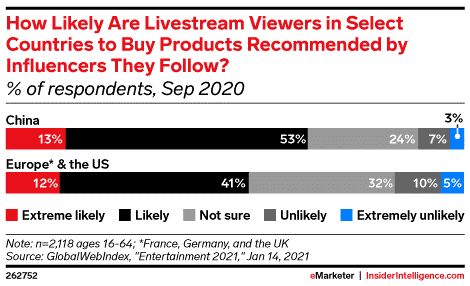
China livestream viewers (53%) are likely to buy products recommended by influencers they follow, compared to other countries.
On the first day of Alibaba’s Singles Day 2021, China’s “Lipstick King” Austin Li sold $1.9 billion in goods on Taobao livestream within 12 hours, ranging from Shiseido lotions to Apple AirPods, earning over 250 million views. Speaking in a husky tone, Austin is always enthusiastic, humorous, and of course, stylish. His distinctive personality and charisma let him become the apple of brands’ eyes, especially cosmetic brands. This highlights the power of choosing a suitable China KOL to assist brands in transferring brand messages, raising brand awareness, and boosting sales volume via livestreaming ecommerce. In AsiaPac, we have our self-developed KOOLER AI, which leverages the 200K+ cross-platform database in Asia to match your brand with the most ideal KOL. Keeping the China audience glued to the screen is no longer unreachable!

Austin Li livestreaming ecommerce
3.3 Omnichannel Retail may Lead China Ecommerce
Omnichannel retailing is no longer a strange concept. When Alibaba and JD.com both embrace the omnichannel solution for their ecommerce businesses, you can be sure that omnichannel retail will be a big ecommerce trend in 2022.
Consumers nowadays hunger for a quality user experience. They encounter your brands or products through multiple touchpoints, such as social media, in-store, or ecommerce sites. So, the capacity of each channel to mesh together to guide customers through the entire customer journey will be vital. Wherever the customer goes, omnichannel retail connects those fragmented experiences and integrates the segmented components into a unified whole, offering a seamless and consistent purchasing experience. In fact, omnichannel has a 90% higher retention rate than single-channel, supported with improved consumer satisfaction. A real-life example is buying online, picking up in-store. In particular, China is at the forefront of omnichannel retailing with “New Retail”: retail digitalization.
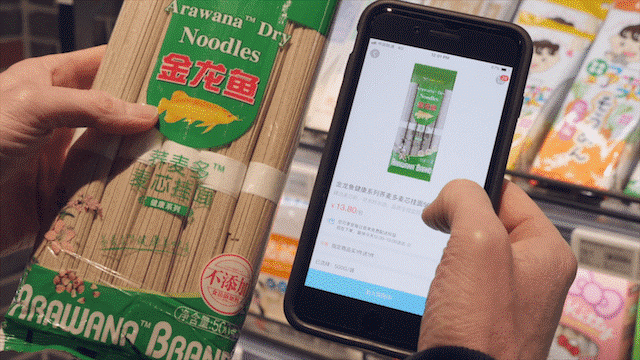
Alibaba’s Freshippo supermarket allows customers to view the product information by scanning QR codes on their phones and arranging their orders to be delivered directly to their houses.
You might be wondering how to incorporate omnichannel retail into your marketing strategies. Thanks to technological advancements, optimizing China omnichannel retail is no longer a pipe dream. Virtual shopping, which seamlessly blends online and offline buying, has recently been a popular example. It reimagines the online shopping experience by utilizing 3D reconstructions of the real-life in-store environment, using virtual reality (VR) and augmented reality (AR). Customers can 'walk' around a store, see product displays, and make purchases just like they would in person - all from the comfort of their own homes. It provides customers with a holistic immersive and engaging online shopping experience. A digital dressing kiosk using 3D technology is also found in some retail locations, allowing shoppers to swiftly "try on" a variety of outfits and find the ones that suit them. Besides, smart sales assistants and touchless payment are also suggested to increase consumer convenience and loyalty.

Virtual try-on in a retail store
4. China Ecommerce Challenges
4.1 Fierce Competition in the China Ecommerce Marketplace
The Chinese ecommerce market is a hotbed of rivalry. Despite the presence of the aforementioned main ecommerce sites, the China market still has a plethora of online platforms. Thousands or millions of brands are listed on each ecommerce site. To stay ahead in China's highly competitive ecommerce marketplace, you'll have to put in a lot of effort.
Going back to the very first step, you must select the right ecommerce platform to engage in. Analyze your target audience’s demographics, look into your product types, and research the functionalities and features of different ecommerce platforms. Choose the most effective ecommerce platform for reaching your targeted Chinese audience. Ultimately, you have to keep in mind that simply registering and listing products on the platform will not magically lead to success. Don’t be anxious. In AsiaPac, we have a team of ecommerce specialists with 15+ years of experience, keeping you ahead of the global online competition.
4.2 Counterfeit Consumer Goods on China Ecommerce Platforms
Consumer products counterfeiting has always been a severe obstacle for brands on China ecommerce sites. Online shopping platforms provide convenience and flexibility for Chinese consumers to shop anywhere and at any time. However, it has also been a platform for illegal and unscrupulous firms to distribute counterfeit items, infringing on intellectual property rights and causing brand dilution, as well as loss of sales.
In response to the acute counterfeit issues on multiple ecommerce platforms, the Chinese government has imposed stiffer penalties to the country's ecommerce law in 2021. To better secure brands and buyers, the policy emphasizes the openness of sellers’ identities and access to more thorough trade information. Furthermore, a growing number of China ecommerce platforms are taking action against counterfeiting concerns. For instance, Pinduoduo had taken down over 10 million items from its platform and blocked over 40 million links to allegedly bogus goods. We can’t guarantee that fake products will never surface on ecommerce platforms. However, with the Chinese government's efforts and the acts of many ecommerce companies, the counterfeit issue could be considerably decreased. Accordingly, ensuring the rights and image of brands.
China Ecommerce Summary
The China ecommerce market is more than ever an El Dorado for companies wanting to sell their products to a wide Chinese audience. Despite rising ecommerce consumption in 2022, the presence of a variety of ecommerce sites gives grounds for overseas brands to offer their products to Chinese consumers flexibly. Consumers’ wants and needs are always evolving. Thus, now is the time to keep an eye on the emerging Chinese ecommerce trend in 2022 and stay ahead of the curve. If you’re looking to gain a strong foothold in the China ecommerce marketplace, click here to contact us now!
About AsiaPac Net Media
With an extensive digital marketing experience of serving more than 2,500 clients across Asia in sectors such as ecommerce, finance, gaming, travel, retail, beauty, FMCG, education, health products etc., AsiaPac’s expert team is highly recognized for the excellence in providing performance-driven services to businesses across Asia, and global corporates targeting Asia markets. If you’d like to learn more about AsiaPac and the work we’ve done, visit our Cases page. For more information on AsiaPac/ AdTech and our services, please contact us at info@asiapac.com.hk/ info@adtechinno.com.



